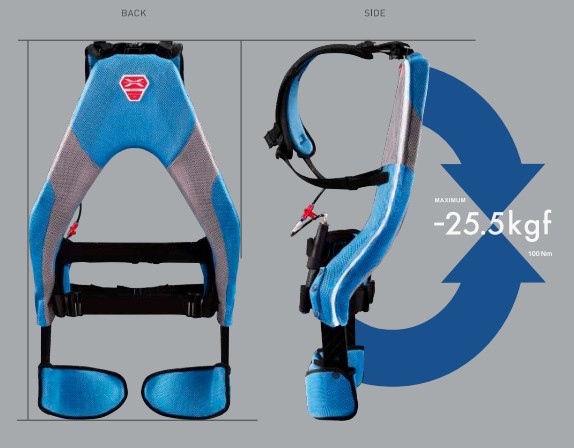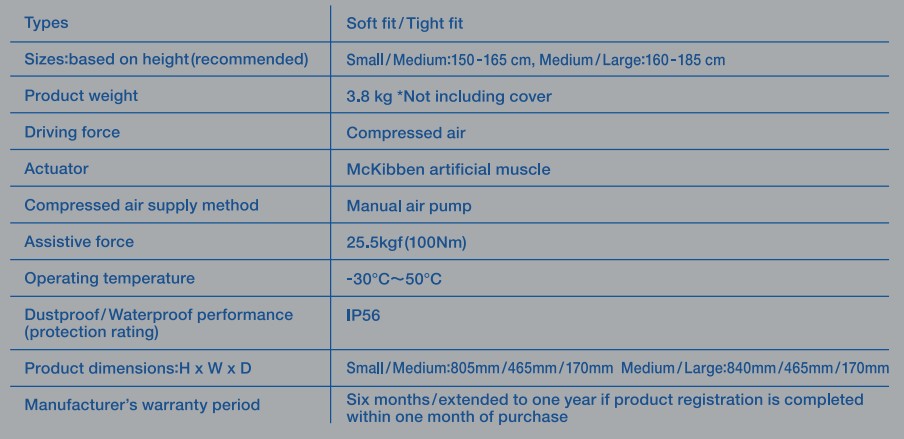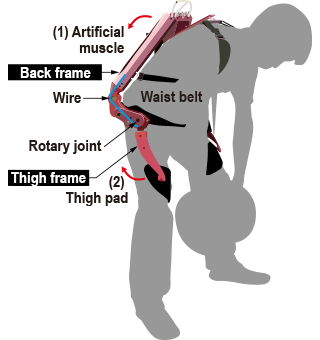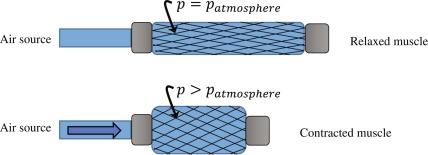1.What is pneumatic artificial muscles?
McKibben air muscles were invented for orthotics in the 1950s. They have the advantages of being lightweight, easy to fabricate, are self limiting (have a maximum contraction) and have load-length curves similar to human muscle. The muscles consist of an inflatable inner tube/bladder inside a braided mesh, clamped at the ends. When the inner bladder is pressurized and expands, the geometry of the mesh acts like a scissor linkage and translates this radial expansion into linear contraction.

Standard McKibbens contract in a linear motion up to a maximum of typically 25%, though different materials and construction may yield contractions around 40% . Though they can technically be designed to lengthen as well, this is not useful as the soft muscles buckle.
2.Wearable muscles which used PAMs




The back frame is designed to swivel back and forward on the rotary joint attached to the top of the thigh frame. One end of each artificial muscle is fixed to the top of the back frame, and the other is attached to a wire. This wire is fixed to a pulley near the rotary joint on the thigh frame. The mechanism operates in the following way:
When the artificial muscles contract, they pull the wires fixed to the thigh frame, and so the back frame swivels on the rotary joint in the direction of the first red arrow in the image to the left. This makes the wearer’s upper body move into an upright posture. The thigh pads help absorb and reduce the counterforce of the thigh frame swiveling in the direction of the second red arrow in the image.


留言